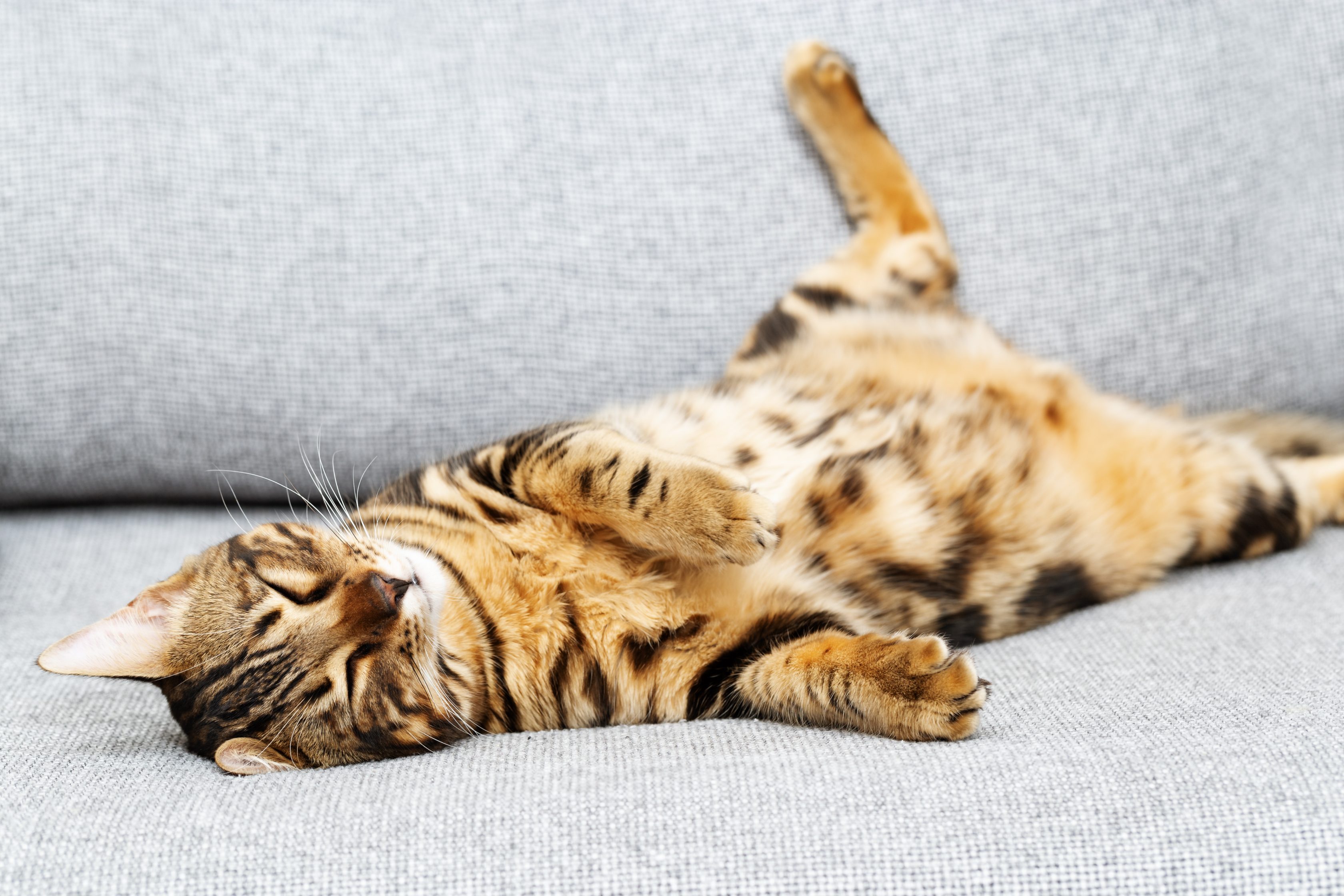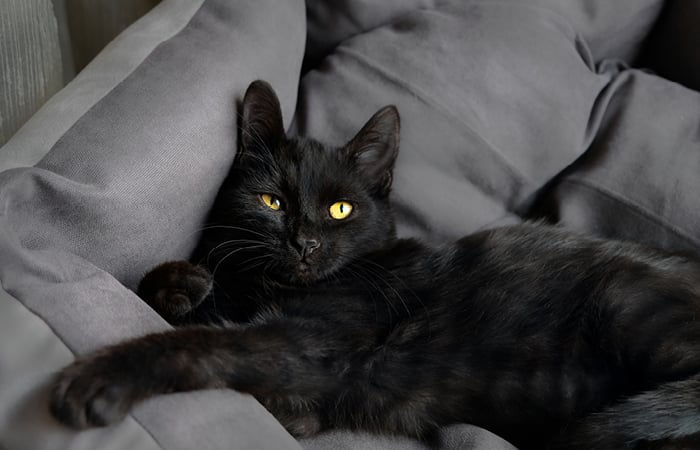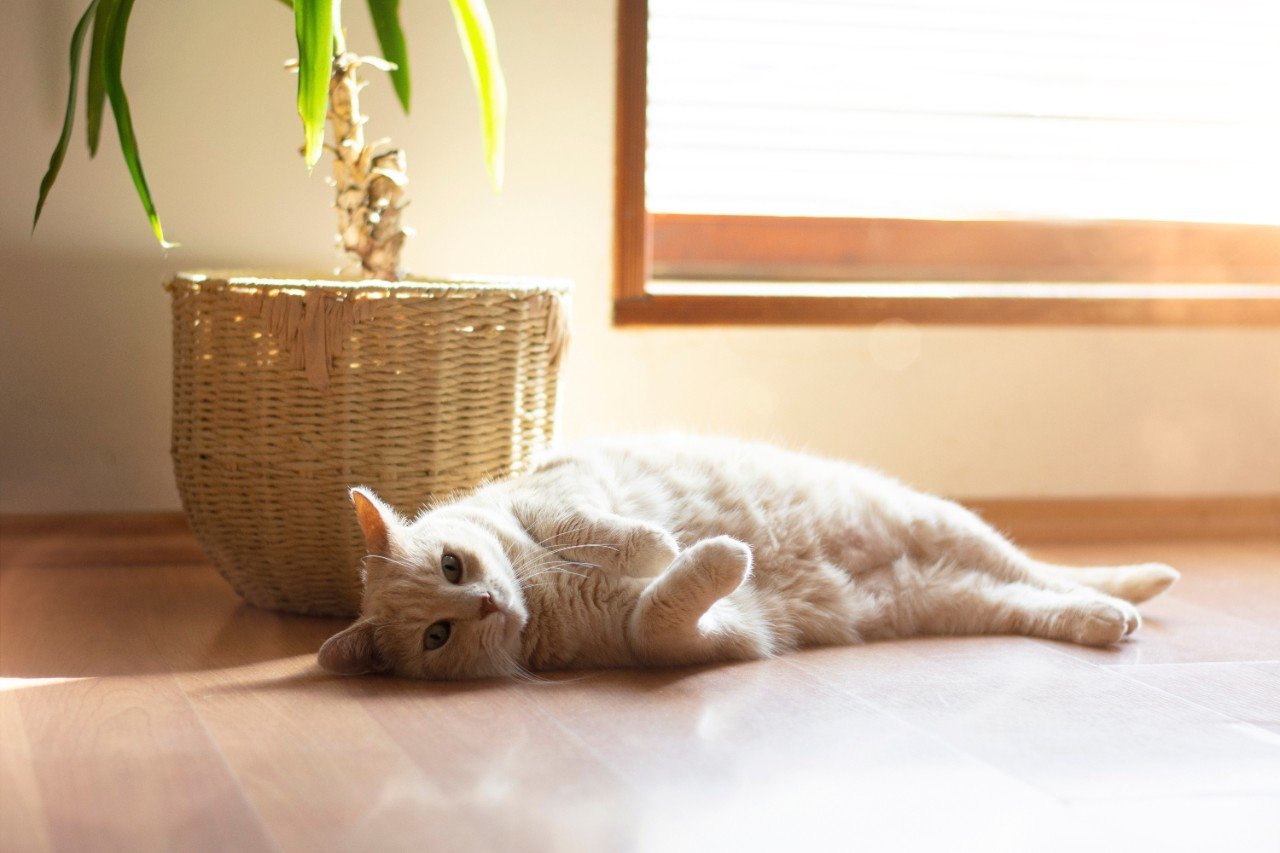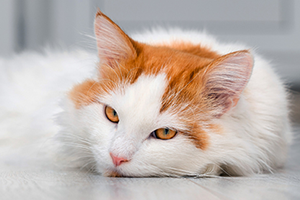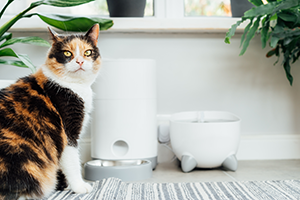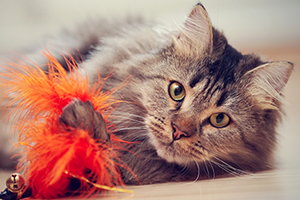When content and relaxed, a cat’s body language is generally loose and flowing. Here’s what else to watch for.
Tail
A cat's tail can tell you a lot about their mood. Look for a tail held high like a flagpole; the feline equivalent of a big smile.
When your cat approaches you with their tail held high and the tip slightly curved, they’re bestowing the warmest of greetings.
Ears
Content cats have ears that are upright and facing forward, showing they’re relaxed. Their ears should appear mobile and gently responsive to sounds around them, rather than rigid, turned out to the sides, or pinned back.
Eyes
Happy cats often display slow, deliberate blinks – sometimes called ‘cat kisses’. When your cat looks at you and slowly closes and opens their eyes, they’re showing trust and affection.
If cats are relaxed, their eyes appear neither wide nor squinting, with pupils that are appropriately sized for the lighting conditions, generally narrow in good light.
Head
A relaxed cat will hold their head in a natural, comfortable position. Offering gentle head bumps or cheek rubs against you or furniture is their way of marking their territory with scent glands and showing affection.
Whiskers
When cats are happy, their whiskers are typically relaxed and positioned naturally to the sides of their face, not pulled back against their cheeks or pushed forward aggressively.
Back
A content cat's back appears relaxed and level, without any arching or hunching. They move with fluid, graceful motions that show they’re comfortable in their space.
Tummy
The ultimate sign of trust is a cat showing their belly. When your cat rolls over and exposes their tummy fluff, they’re demonstrating complete confidence in their safety.
However, it’s often a good idea to resist the urge to rub the area, as most cats prefer you to admire from a distance.
Paws
Happy cats often knead with their paws in an adorable motion that looks like they’re making biscuits. This behaviour harks back to kittenhood when they likely kneaded their mother’s belly while nursing.

